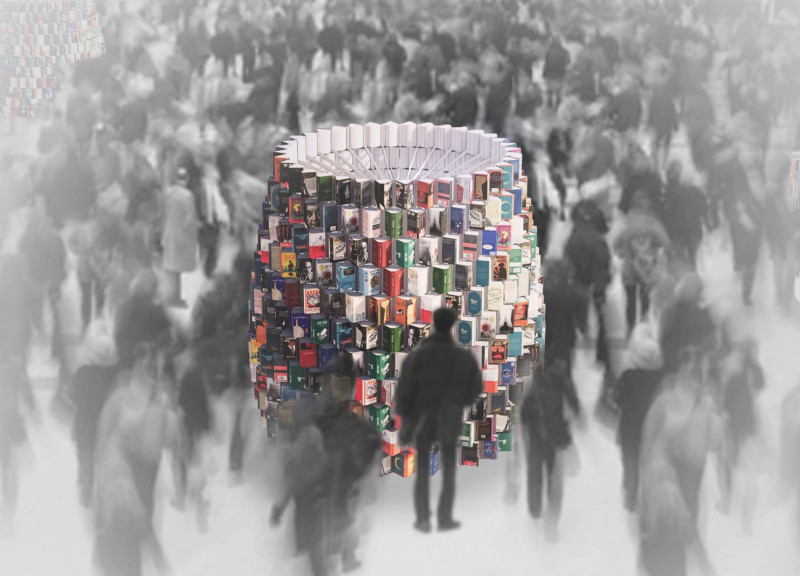5 key facts about this project
At its core, "Expansive Volumes" emphasizes the relationship between space and books, manifesting a design reminiscent of a stack of books that can open and close. This concept allows for a versatile environment, catering to various reading preferences—whether individuals seek privacy or a more communal space. The architecture highlights the duality of solitude and social interaction, inviting users to navigate between these experiences based on their needs.
The project employs a range of carefully selected materials that contribute to both functionality and aesthetic value. Thermoplastic polyurethane is used for its flexibility and resilience, enabling the structure to feature folding elements without compromising stability. The lightweight yet robust aluminum framework supports the overall architecture, while wood laminate is incorporated into seating areas, offering warmth and comfort. Additionally, acoustic panels within the structure effectively mitigate noise, enhancing the intimate atmosphere ideal for reading.
Several noteworthy features enhance the user experience within "Expansive Volumes." The adaptability of the design is one of its most significant aspects, allowing users to manipulate spatial components to create personalized reading areas. This modularity encourages users to engage in various reading postures, reflecting diverse preferences and accessibility needs. The tactile interaction with the façade, which mimics book pages, further enriches the experience, inviting users to engage not just visually, but also physically with the space.
In terms of user interaction, the layout facilitates easy access to a curated selection of books, inviting individuals to immerse themselves in literature. Users can configure their surroundings according to personal inclination, whether curling up in a quiet nook or joining friends in a more open communal setting. This thoughtful consideration of user behavior aligns the design closely with the fundamental purpose of creating conducive reading environments.
"Expansive Volumes" stands out for its unique approach to merging architecture and literature into a cohesive experience. By honoring the essence of books while addressing the challenges of modern reading spaces, this project contributes meaningful architectural ideas that encourage exploration and engagement. It not only serves as a sanctuary for readers but also prompts a collective appreciation for literature within the community.
To gain deeper insights into the architectural plans, sections, and detailed designs that shape "Expansive Volumes," readers are encouraged to explore the full presentation of the project. A closer examination of these elements reveals the thought processes and design intentions that have informed this innovative architectural work. The exploration of architectural ideas within this context will deepen understanding and appreciation for the potential of design in enhancing our reading experiences.


























